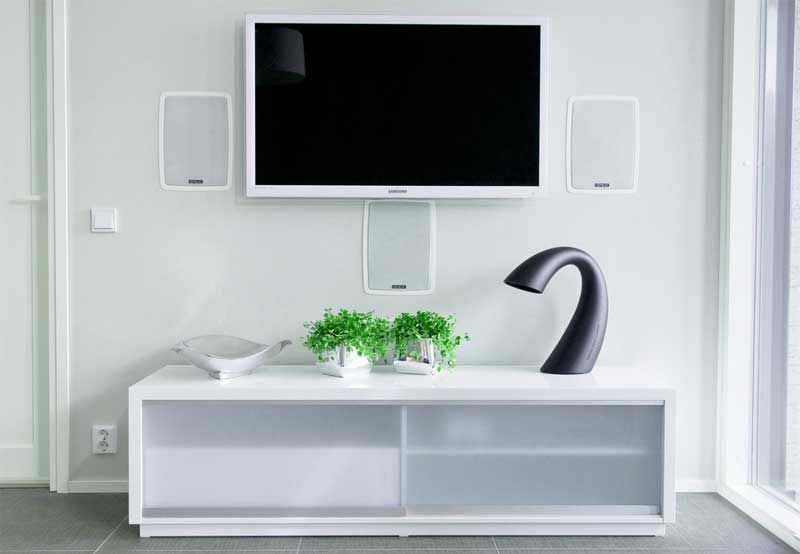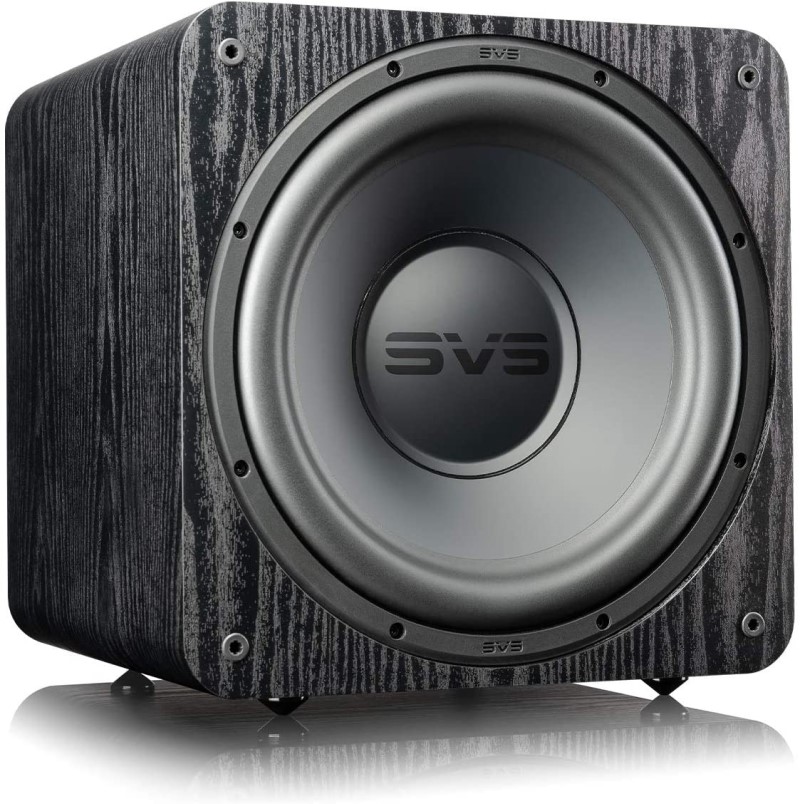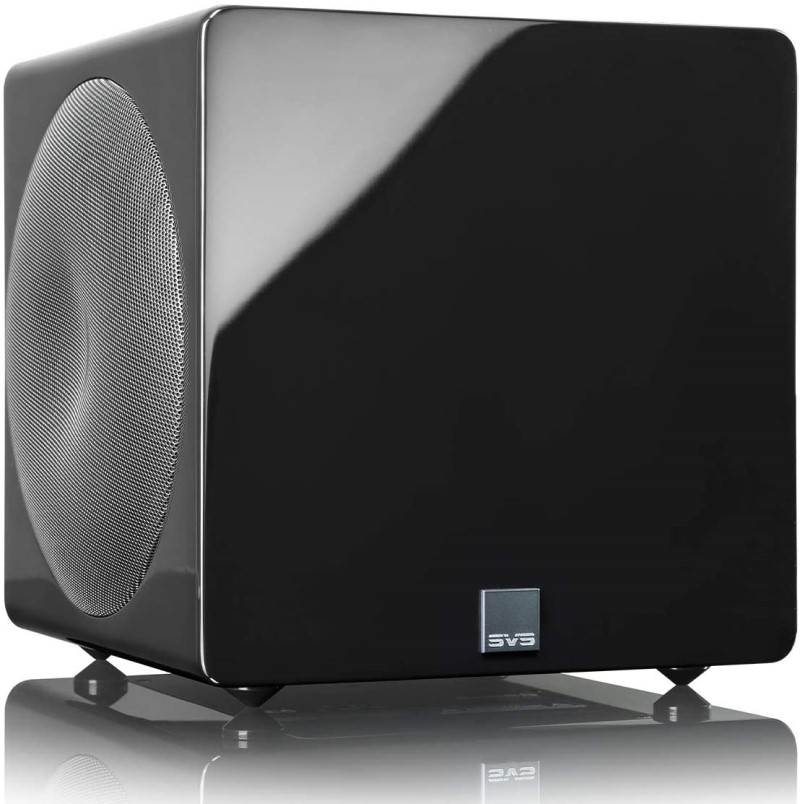In-Wall Subwoofers are a Terrible Idea
Often custom home theaters are featured online and in print magazines (they still have those, right?). You’ll see multiple rows of recliners, a huge screen, custom carpet, and even stylized furnishings. They’ll look like the Batcave or the bridge of the Enterprise. One thing you’ll almost never see? Speakers. If you even notice the speakers, they’ll be grilles on the wall. So when people start to envision their own home theater rooms, they rarely have freestanding speakers in mind. This leads them to investigate in-wall subwoofers. And in-wall subwoofers are a terrible idea.
The Problem with In-Wall Speakers
We’ve talked about in-wall speakers before. They can create a very clean and svelt home theater. In-wall speakers are particularly popular with people (read: spouses) that don’t understand or really want a home theater system. They don’t mind the extra sound, but not if it means they have to move a plant or relocate a chair. They’ll take the speakers, but not if they have to see them.
The problem with these types of speakers is that once they are installed, you are stuck. They can’t be moved. Plus, you rarely have as many placement options as you think. You may look at a wall and assume that you can put your speakers wherever you want. But there are studs and other obstructions behind the drywall. Placement may not be as flexible as you’d assume.

The Terrible Consequences of In-Wall Subwoofers
In-wall subwoofers take all the problems of in-wall speakers and magnify them. Placement of speakers is important for good imaging and proper surround sound. Placement of subwoofers can make the difference between good bass and bass that will literally never be good. If you have a rectangular room, we can fairly reliably tell you where to place your subwoofers. But if you don’t have a rectangular room, or you don’t want two subwoofers, placing it for the best sound is much more difficult. It often takes a lot of trial and error, something you can’t do when you’ve installed a subwoofer in a wall.
And that is only one of the main reasons in-wall subwoofers are a terrible purchase. They have many other disadvantages. They tend to be more expensive than freestanding options, they perform worse, and they make soundproofing nearly impossible. But as terrible as we think in-wall subwoofers are, infinite baffle subwoofers are so much worse.
What is an Infinite Baffle Subwoofer Anyway?
First, we are not talking about the brand Infinity. Infinity is a perfectly fine brand. We are talking about infinite baffle subwoofers (often referred to as IB subs). An in-wall subwoofer is fairly self-explanatory. It is a subwoofer that is installed in your wall. An IB subwoofer is similar with some important differences. Any quality in-wall subwoofer is self-contained. You install a box in your wall. The box may be tall and thin so that it will fit in a standard wall bay, but it is still a box.
An IB subwoofer is different. It is usually a series of drivers (can be just one but usually more) that are installed in a wall or ceiling. The backs of the drivers are completely open to the room/space behind. They are usually installed in a basement in a wall the has an open, unfinished space on the other side, or in a ceiling. The in-ceiling installation leaves the back open to the attic.
The disadvantages for soundproofing are obvious. Not only are you trying to contain the sound in your theater, now you have to worry about another room. The advantages? IB subs are fairly cheap (you just need to buy and install the drivers) and can play loud and low. But, again, placement becomes a huge issue. Plus, most people don’t have the desire to give up another room or fill their entire house (via the attic) with bass just to save some money on their subwoofer.
Best Freestanding Options
We always say when you are shopping for a subwoofer that you can have loud/low, cheap, or small – pick two. This mostly holds true. If you really want a small sub that plays loud and low, you’ll need to make some sacrifices. Either you’ll need to have a small room (small subs can fill a small room with bass just fine) or you’ll have to fork over some serious cash. For small subs to be placed in small rooms, there are lots of affordable options out there. Our favorites for small, good-performing subwoofers that don’t break the bank are from RSL (Speedwoofer 10s), SVS (SB-1000 Pro or 3000 Micro), and Rythmik (L12). If you want more performance and are willing to pay (a lot) more, check out JL Audio.

Rythmik L12 
SVS SB-1000 pro 
SVS 3000 Micro 
RSL Speedwoofer 10s
But our favorite suggestion when people ask about “hidable” subwoofers is to suggest a cylinder sub. For a long time, HSU Research (who makes great subwoofers by the way) made cylinder subwoofers. But not anymore. Now, only SVS does. The PC-2000 Pro fits most rooms (there is the more expensive PC-4000 for the largest rooms) and doesn’t look like your typical speaker. It is round and, in the case of the PC-2000 Pro, has a wood top. We’ve seen people use them as stands for knickknacks (just make sure you secure them). The PC-4000 has a grille on top so you can throw an acoustically transparent fabric over it and do the same. Just don’t put anything that might drip on them. The key is that you can use them as stands for your stuff which makes them much more palatable to your significant other.

Conclusion
While we’d love to say that in-wall subwoofers aren’t a terrible idea, but they mostly are. The only time we’ve ever recommended in-wall subwoofers (more like admitted that it could work) is in rectangular rooms where everything was down to the studs. Even then, we’d still prefer freestanding subwoofers because of their lower cost, higher performance, greater soundproofing, and the ability to change their placement if necessary. While we understand the desire for a clean look in your home theater, we don’t think the tradeoffs are worth it.






